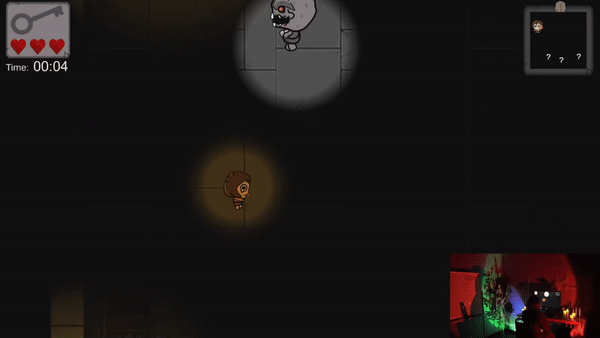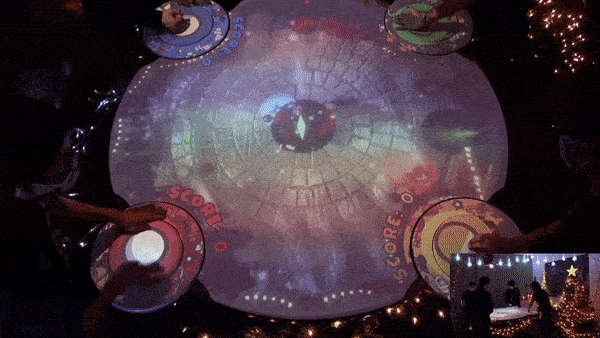The Wedding
PROJECT INFORMATION
Platform: Quest 2.
Role: Game Designer/Programmer.
Tools used: Unity, C#.
Team Size: 5 members:
2 artists, 2 programmers, 1 sound designer.
Duration: 2 weeks.
________________________________________________________

OVERVIEW
This is a story experience. The player is the mother of a girl who is getting married. But, instead of it being a normal marriage, it is a transaction where the girl is just sold like an object in the name of marriage so that the family can get some money in return which they need to feed themselves.
________________________________________________________
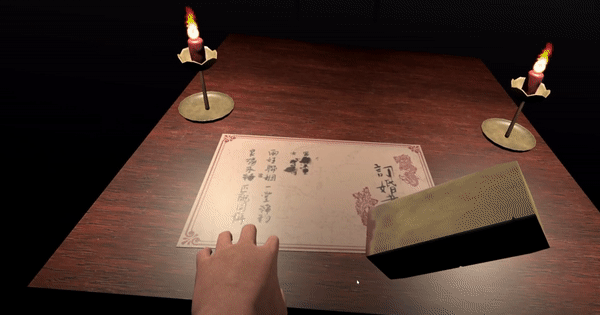
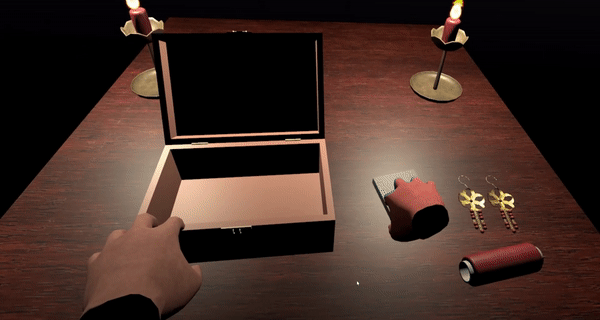
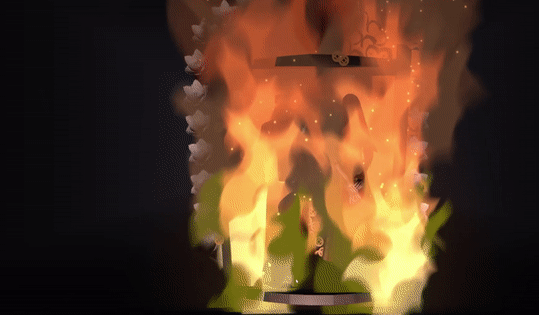
RESPONSIBILITIES
-Scripted gameplay progression using triggers and conditions.
-Scripted interaction for ‘stamp’ and ‘gifts in box’ activity.
-Scripted and animated candle flame on tables.
-Made dissolving shader using shader graph in Unity.
________________________________________________________
DESIGN CHALLENGES
We had this really strong concept and idea but were struggling a bit as to how to implement it in terms of telling a story and also including interactions for the player to do.
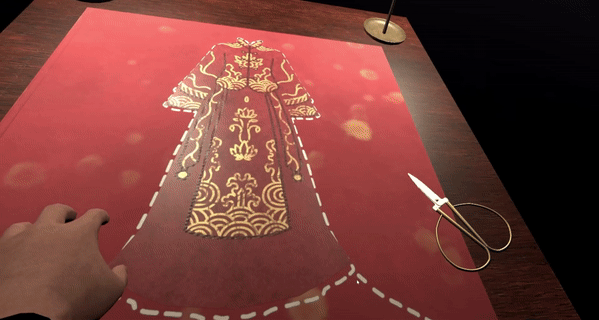

PROBLEM 1:
We really wanted the player to feel like they’re a part of this story and they are contributing to it in some way. Not just mere interaction of doing things but something that has an impact on the progression and the story as a whole.
SOLUTION:
There was an idea about preparing for the wedding as a mother does for her child. We quickly brainstormed a few of the actions that the players can do which will make them feel like they’re actually preparing for the wedding. We came up with stamping on the marriage certificate, putting gift items in a box to give as a present, cutting out a wedding dress for the bride, and tying a knot to the couple’s photos. We had to elevate this further as it was not just a regular wedding. We also had to include aspects of the actions that showed that the wedding is a necessary evil for the family and not a celebration. So, we decided to add a negative layer to a few of the actions like when you put the gifts in the box, it changes to ash-colored items meaning they have no significance. Another thing we did was when the photos were put together they tie to each other as if choking the couple as an indication of the wrongs happening in the name of a wedding
PROBLEM 2:
One of the things we were looking at was making it feel like a journey for the player. Doing one thing at a time and progressing towards the end. We wanted the player to feel like they’re progressing physically as well as in the story in terms of the pacing and the build-up.
SOLUTION:
We decided on placing each interaction on a table and lining up tables leading to the wedding. This suited us well in laying out the progression and forward movement of the player towards the final goal that is the wedding ceremony. The tables vanish after the player is done interacting with it and then the candles of the next one lit up. This was a clear indication for the player to move ahead and keep going further in the room and the story. We also arranged the interactions in terms of their importance and position in an actual wedding to sort of raise the interest curve leading to the final ceremony where the couple actually burns in fire to depict how the marriage is just an agreement between the families, and the bride and groom suffer because of it.

________________________________________________________
What went well?
-We had a unique story that we were able to communicate to the player through game mechanics.
-We achieved the dark, horror tone in-game through art, lighting, and sound, that complemented our story.
What can be improved?
-Even though the story is unique, putting the player in the shoes of a character that they don't relate to can be tricky. It was hard to make the player empathize with the character with such short gameplay and no back story.
-The ending can be improved, as it is a bit unclear as to what the player is supposed to do in the end. They just stand there and the game ends. A gameplay interaction can be at that point to let the player initiate the end of the game.
